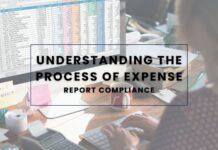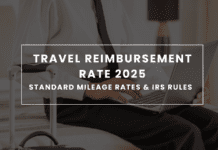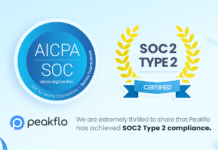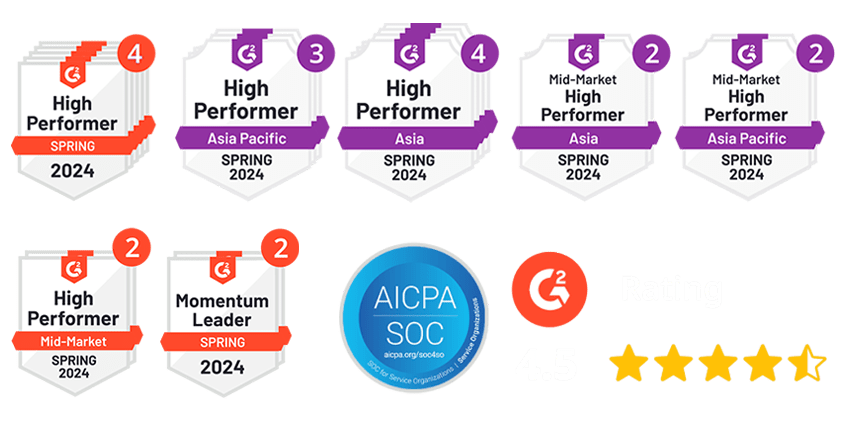Is your company spending too much on business travel? Corporate travel costs in Singapore are rising due to inflation, higher airfare, and hotel rates. According to ECA International, Singapore’s business travel expenses are among the highest in Asia, with daily costs at SGD 515 per traveler.
Poorly managed travel spending can drain budgets and reduce profitability. Many companies struggle with last-minute bookings, expensive flights, and overspending on accommodations. Without proper planning, these costs can get out of control.
So, how to save money on business travel? The key is to plan, enforce clear travel policies, and track expenses efficiently. Cost-saving strategies help businesses reduce wasteful spending while ensuring employees travel comfortably.
In this guide, you will learn 10 practical tips to cut corporate travel costs and manage expenses better.
Top 10 Hacks to Save Corporate Travel Expenses
Finding cost-effective business travel options requires careful planning, smart choices, and a little creativity. By adjusting the travel approach, companies in Singapore can significantly reduce unnecessary spending while maintaining comfort and efficiency. Here are 10 practical tips to help you save money on business travel:
1. Set a Clear Travel Policy
A travel policy is essential for controlling costs. It should outline acceptable expenses, preferred vendors, and guidelines for booking flights, accommodation, and transport.
A clear policy helps employees make informed choices and stick to cost-effective business travel options. By setting limits, companies avoid unnecessary upgrades and last-minute price increases, making budgeting more predictable.
2. Use Corporate Travel Management Platforms
Using a corporate travel management platform can simplify the booking process and ensure compliance with company policies. These platforms allow businesses to enforce travel preferences, monitor spending, and approve expenses before booking.
This leads to more cost-effective business travel, as employees can only book within pre-approved limits. The platform also centralizes reporting, making it easier to track travel costs and avoid waste.
3. Opt for Cost-Effective Accommodation
Accommodation can be a major expense. Instead of booking high-end hotels, consider more affordable alternatives like business hotels, serviced apartments, or short-term rentals. These options offer value for money, especially for longer stays.
Always negotiate corporate rates with hotel chains or use booking platforms that offer discounts for businesses. It ensures employees get a comfortable stay without overspending on accommodation.
4. Book Flights in Advance
Booking flights early is one of the best ways to reduce costs. Last-minute flights can be much more expensive. Planning allows companies to take advantage of special offers and lower fares.
Set a deadline for booking tickets to avoid price hikes and ensure employees book their flights within the cost-effective business travel window. Encourage team members to use price alert tools to track cheaper options.
5. Encourage Virtual Meetings
Whenever possible, opt for virtual meetings instead of in-person travel. Video conferencing technology is now more accessible, allowing companies to connect with clients and teams without the need for travel. This reduces cost-effective business travel expenses and the time employees spend away from their work.
Virtual meetings are an excellent way to control travel costs while still maintaining effective communication.
6. Choose Budget-Friendly Transport Options
Transportation is another area where businesses can save money. Instead of booking taxis or rental cars, consider using public transportation, ride-sharing services, or carpooling for short trips.
Booking a van or shared transport can be more economical than individual rentals for larger groups. Encourage employees to use cost-effective business travel options for local transport, reducing travel-related expenses.
7. Use Airline and Hotel Loyalty Programs
Loyalty programs from airlines and hotel chains can offer significant savings on future travel. Encourage employees to sign up for these programs to collect points or rewards.
These points can be redeemed for discounts, upgrades, or even free nights, helping businesses lower their overall travel costs. By taking full advantage of these loyalty schemes, companies can make their travel spending more cost-effective in the long run.
8. Implement a Travel Expense Approval Process
A structured approval process is key to controlling costs. Before any trip, employees should submit an estimate of their travel expenses for approval. This ensures that only necessary and cost-effective business travel options are chosen.
Having a clear approval process helps prevent unnecessary upgrades or unapproved expenses and keeps the company within its travel budget.
9. Analyse Travel Data and Spend Trends
Regularly reviewing travel data can reveal where businesses are overspending. Track and analyze past trips to spot patterns in your spending. If certain routes or hotels are consistently expensive, consider alternatives.
This insight helps businesses make smarter decisions about future trips, ensuring they select more cost-effective business travel options.
10. Reimburse Employees Promptly
A quick and efficient reimbursement process helps maintain a smooth workflow and prevents unnecessary delays. When employees are reimbursed promptly for approved expenses, they are more likely to stick to the set travel budget.
Clear reimbursement guidelines help employees understand what’s covered and prevent unexpected expenses. It leads to more responsible spending and better tracking of travel costs.
By following these tips, companies can control their travel expenses and prioritize cost-effective business travel. To further simplify the process and ensure better expense tracking, consider using Peakflo’s travel and expense automation solution to simplify approval workflows and reimbursements.
How Peakflo Can Help Simplify Corporate Travel Expense Management
Peakflo offers a comprehensive solution designed to simplify the entire travel expense process. It ensures businesses stay on budget while enhancing productivity. Here is how Peakflo helps manage corporate travel expenses:
- Configurable Policies: Set clear, customizable expense rules that align with your company’s specific spending guidelines, ensuring compliance across the board.
- Dynamic Expense Categories: Sort travel expenses into flexible categories based on your business’s needs, making it easier to track spending and stay organized.
- Per Diem Rules: Apply location-based daily allowances to control daily spending, helping employees stay within budget during their trips.
- Manage Travel Requests: Simplify the travel request process, ensuring employees submit plans that align with company travel guidelines for approval.
- Expense Automation: Peakflo automates travel expense submissions and reimbursements, saving time and reducing manual tasks.
- Integrations with ERPs: Seamlessly integrates with popular ERP/accounting software, ensuring smooth financial workflows and data accuracy.
- Real-Time Expense Monitoring: Gain real-time visibility into travel costs, improving accuracy and compliance by staying on top of all expenses.
- Customizable Approval Flows: Set up custom approval workflows for faster reimbursements, improving efficiency and keeping employees satisfied.
- Policy Adherence: Automatically flags non-compliant expenses, enforcing company policies and ensuring only approved spending.
- Anomaly Detection: Detect unusual expenses quickly with alerts for out-of-policy or duplicate charges, keeping your budget in check.
Peakflo makes it easier to maintain control over travel expenses while promoting cost-effective business travel across the organization. It’s the ultimate tool to reduce manual processes, improve policy compliance, and keep travel costs within budget.
Conclusion
Managing corporate travel costs is key to maintaining profitability. By setting clear travel policies, using the right tools, and adopting smart strategies, businesses can learn how to save money on business travel without compromising employee comfort.
Every decision, from booking flights in advance to using loyalty programs, helps reduce costs. By following these strategies, businesses can reduce unnecessary expenses and boost efficiency.









![Why AI Sales Calls Are Making Good Sales Reps Even Better [2025 Guide] ai sales calls](https://cdn-kmjmp.nitrocdn.com/YvtqmrsiHUxqerlSiZgbfzqqTARWTElr/assets/images/optimized/rev-a4aafe3/blog.peakflo.co/wp-content/uploads/2025/09/65168cf6-3001-4733-8cbc-12d5684cf449-218x150.webp)

































